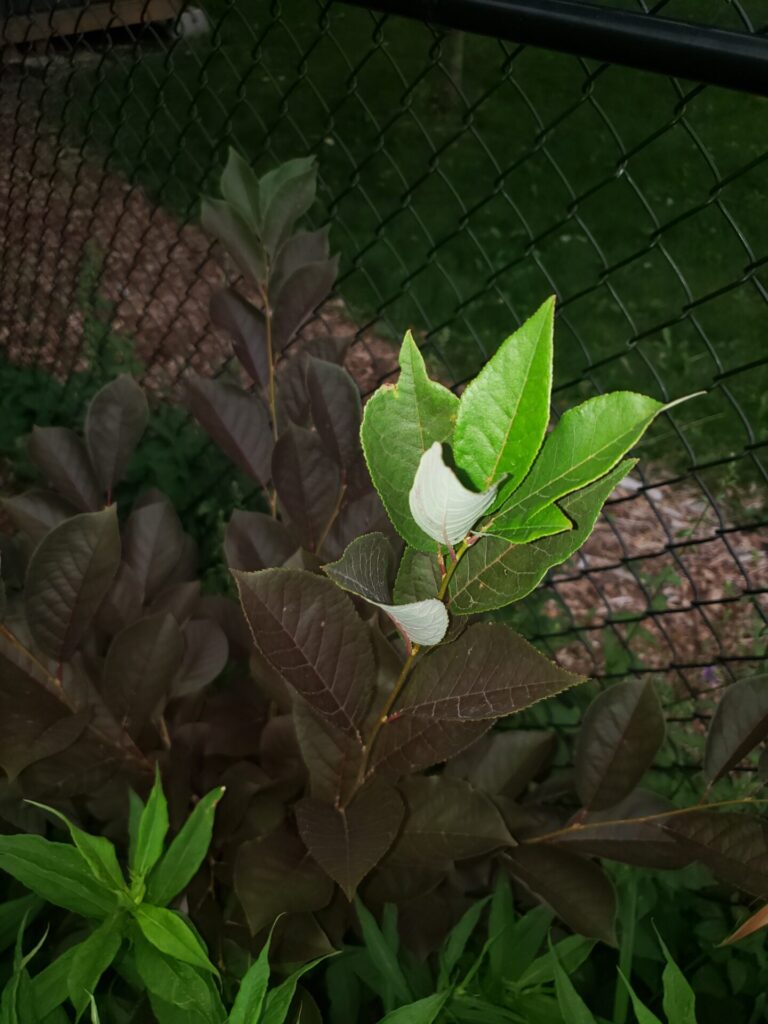
When my mom gave me this plant it had green leaves and blue flowers. For the subsequent 3 years it had no flowers and had brown leaves. Not fertilized. No manual watering. Soil is slightly clay. South yard with trees nearby. Likely 4-5 hours sun at peak summer. Other than that it is in the shadows of 15′ tall cherry tree in the morning (about 10 feet away) and very tall maples in afternoon (about 50 feet away). Plant is 3-4 feet high and about 3 feet diameter
Based on the photo, this plant appears like it could be a volunteer cherry tree seedling that may have grown from a cherry seed dropped from the nearby cherry tree that you mention. It’s likely worth a second look at that plant – you could do this with the help of a plant ID app or by searching for photos of cherry tree leaves and hydrangea leaves on the internet. Alternatively, you could take a leaf into your local plant nursery to ask for help with the identification.
If this does however turn out to be a hydrangea, your description of the original plant sounds like a Hydrangea macrophylla, which is a less hardy hydrangea for growing in Toronto. It’s a popular plant in garden centres in early spring and is commonly force-bloomed in greenhouses to be ready for Easter arrangements.
Since hydrangeas need about four hours of sun per day to bloom, I don’t think lack of sun is the issue here.
The colour of leaves provides the biggest clue for why this plant is not thriving. They appear to be purple in colour, which can be a sign of a phosophorus deficiency, particularly when it occurs in lower leaves. In hydrangeas with blue sepals such as yours, the root cause of this is often how the soil was amended in the greenhouse where this plant was grown. I would suggest fertilizing your soil with an organic amendment that is high in phosphorus, such as bone meal. You may want to do a soil test since that’s the only true way to know for sure whether the soil needs fertilizer. Overwatering is another cause of leaf purpling but since you mentioned that you are not manually watering. Hydrangeas do require regular water though, since their roots are shallow, so I would recommend watering regularly especially when we have dry spells between rain in Toronto.
In general, it’s a good idea to apply compost to the soil around hydrangeas in the spring for a nutrient boost.
I will point you to Growing Hydrangeas: A Toronto Master Gardeners Guide for more information on caring for hydrangeas.

